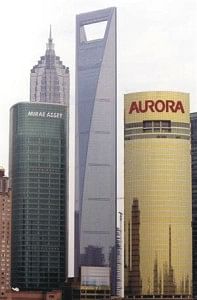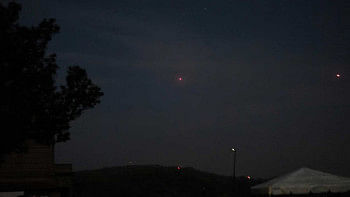Scaling new heights

Mori conceived of the Shanghai World Financial Center 15 years ago.Photo: AP
The 101-story, 492-metre-high Shanghai World Financial Center finally opened its doors last week, becoming the world's second tallest building after Taipei 101. Designed by New York architects Kohn Pedersen Fox. The project is the brainchild of leading Japanese property developer Minoru Mori, president and CEO of Mori Building Co., Ltd., and the man behind Tokyo's celebrated Roppongi Hills development. He spoke to Newsweek's Duncan Hewitt in Shanghai.
Hewitt: What gave you the idea for this project back in the early '90s, when Shanghai's modern development had barely begun?
Mori: When I came here in 1993 Shanghai really felt like postwar Japan: everyone was dressed in drab clothes; there were a lot of bicycles. But I felt this was the place to invest. I visited many different cities -- including Moscow, Jakarta, Ho Chi Minh, also Shenzhen in southern China -- but we settled on Shanghai. I knew that Shanghai was the centre of Asia before World War II, for finance but especially for trade. It was a larger centre than Tokyo … and so I felt that once the system turned from communism to capitalism, Shanghai would certainly come back onto the world scene.
What did people say when you went back to Tokyo and told them you were going to build in Shanghai?
Generally, the Japanese were very sensitive to the risk represented by China, including the political risk. I knew that reactions would be rather difficult and negative back home. So, I had the idea of making this project part of the official development assistance from Japan to China. I approached the president of the Overseas Economic Cooperation Fund, and they agreed to gather about 70 percent of the equity portion, and Mori Building was to take up 30 percent. So the funding was partly public -- and I think that's how China authorised this.
Is it meaningful in terms of Sino-Japanese relations?
Absolutely. When we started [in 1993], we didn't expect a roller-coaster path for Sino-Japanese relations: we expected they would naturally become deeper and stronger, so we didn't really think about the building as a symbol of Sino-Japanese relations. But of course Sino-Japanese relations deteriorated; people even threw rocks at the Japanese Consulate in Shanghai [in 2005], and some violence occurred when the Japanese soccer team beat China. After so many incidents between the two countries, I feel the presence of this building is very symbolic. In fact this year is the 30th anniversary of the Sino-Japan Peace and Friendship Treaty, so the fact that it's completed at this moment is also symbolic.
But you had to change the design because many Chinese thought the rising sun's shining through the original round hole on top of the building resembled Japan's wartime rising-sun flag, a despised symbol in China. Doesn't that show there are still problems?
The design change was not based on a political consideration but rather a social consideration -- in many countries there can sometimes be an overflow of patriotism -- so you have to be sensitive toward this. But this actually resulted in a happy outcome: it gave us this extraordinary observation deck [on the 100th floor]. And I have a fundamental optimism about relations between China and Japan, that these will become better and better.
But the Chinese real-estate industry, along with the rest of the economy, is showing signs of slowing down. Are you worried that there's a risk in opening a property like this?
As far as Shanghai is concerned, I think this is a short-term correction. The city has already started its preparations for hosting the 2010 World Expo; this will trigger new inbound investment into Shanghai, and will also stimulate Shanghai's economy to move more into the post-industrial sector. So I think and hope that Shanghai's growth rate will not slow down so much.
There is a discussion among some Chinese architects and intellectuals about whether the country is too obsessed with tall buildings. Are you concerned that a high-profile building like this will just inspire taller and taller buildings?
I don't think the height is a problem; actually the higher the better -- as long as you keep the ratio of greenery large and the footprint of each building minimal. This is my concept of the Vertical Garden City. City development is not contradictory to nature: you build high up in the sky and use the rest of the land at ground level for greenery and water -- and also use underground space efficiently for functions that don't need sunlight to make a city which is well lit by natural sunlight. The more compact the better for the global environment.
© Newsweek International. All rights reserved. Reprinted by arrangement.

 For all latest news, follow The Daily Star's Google News channel.
For all latest news, follow The Daily Star's Google News channel. 



Comments